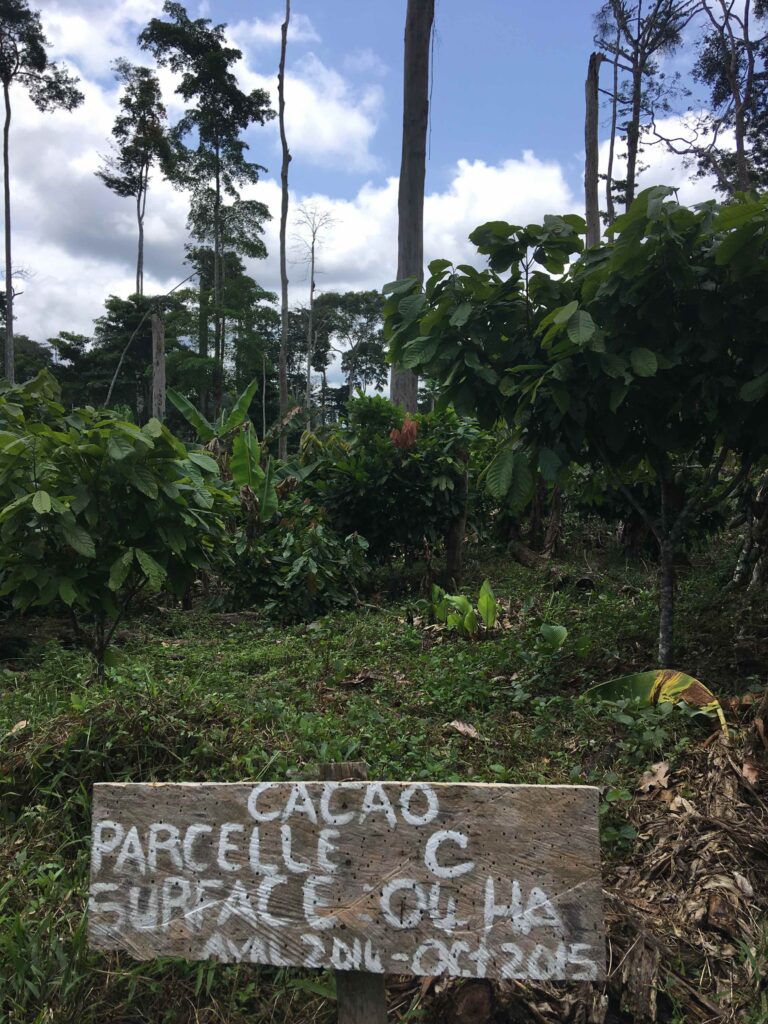For the purposes of cacao sourcing, we are mainly interested in whether a cacao farm has been established on land that was previously forest, as this causes potentially significant disturbance to biodiversity, local climate regulation, soil structure, and water retention.
Cacao production models vary immensely in terms of the quantity and quality of non-cacao tree species. In West Africa, but also parts of South America, cacao production has been identified as a major driver of deforestation because the dominant production strategy is via low-shade/full-sun systems that remove most naturally occurring trees.
Since cacao is often grown under a canopy of larger trees, whether or not a cacao farm constitutes deforestation would depend on how many of the naturally occurring trees have been removed during farm establishment.
For example, Côte d’Ivoire was a highly forested country at the time of independence in 1958, but has since lost almost all its primary forest largely due to cocoa. This is because cacao farm establishment is often most successful on land that was previously cleared tropical forest.
In Ghana, the forest definition is slightly stricter than that used by the FAO, with a minimum of 15% canopy cover, minimum height of 5 meters, and minimum area of 1 hectare. Importantly, tree crops, including cocoa, (but also citrus, oil palm, and rubber) are not considered to be forest trees in the context of Ghana.
Given the severity of the situation, the cocoa industry has committed itself to eliminating deforestation from cocoa supply chains in most major cocoa producing countries, including Ghana and Côte d’Ivoire.
Known as the “Cocoa and Forest Initiative,” zero deforestation cocoa has become a core sustainability strategy of the cocoa industry.
In supply chains where agroforestry systems are common, such as the cocoa supply chain, a definition that considers zero net deforestation (rather than gross deforestation) may be appropriate because some trees will be replaced by more valuable stands such as cocoa or fruit trees.
For more information, see this map illustration by Mighty Earth of deforestation in Ivory Coast, West Africa.
Próximamente versión en español




Authored by
Sophia Carodenuto, Professor of Geography, University of Victoria
Academic/University Faculty
References
Global Forest Resources Assessment 2020, Food and Agriculture Organization of the United Nations, Rome, 2018
Ghana’s National Forest Reference Level, Ghana National REDD+ Secretariat, Forestry Commission, January 2017
“Chocolate Forests and Monocultures: A historical review of cocoa growing and its conflicting role in tropical deforestation and forest conservation,” François Ruf and Götz Schroth, Island Press, 2019
Eliminating Deforestation from the Cocoa Supply Chain, Alan Kroeger, Haseebullah Bakhtary, Franziska Haupt, and Charlotte Streck, for The World Bank Group, March 2017
Have a comment on this definition?
